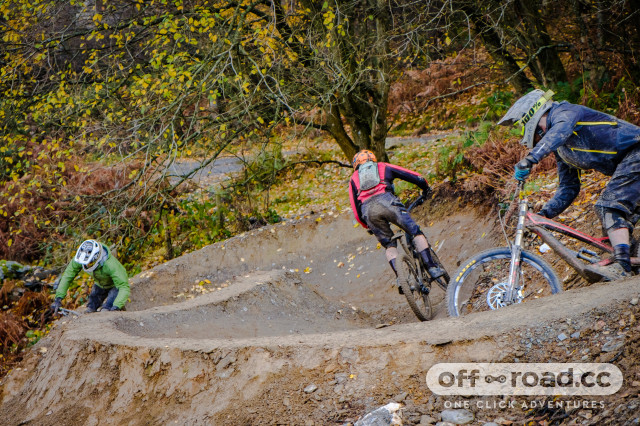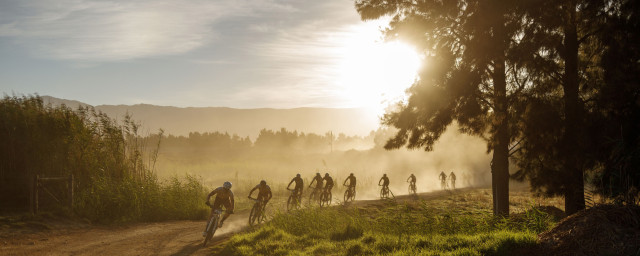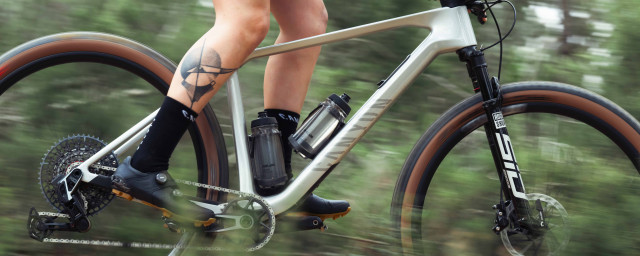How to start mountain biking

Mountain biking is one of the best outdoor activities combining fitness and mindfulness. It combines the natural therapy of forests and outdoor landscapes, with the engagement of using a mechanical device, requiring rider input and skill.
- Beginner mountain bike gear - everything you need to know
- Buyer's guide to mountain bike and gravel shoes - a beginner's guide to flat and clipless options
- Best hardtail mountain bikes 2023 - great hardtails for every budget
Mountain biking engages all our senses and skills. But it can be dangerous, too. The terrain and trail types vary wildly, from beginner trails to extreme downhill tracks. And often, those trails can be within a few hundred yards of each other in a designated riding area, crisscrossing in a way that easily confuses anyone new to mountain biking. For a newbie rider to mistakenly roll into an advanced trail, can have severe crash consequences.
How should you engage with mountain biking, as a newbie, to have the best possible experience? And ensure that your first proper mountain bike ride, isn’t your last. We have a guide to help beginners become the best mountain bikers they can be.
Embracing your first ride
Mountain biking can appear a daunting tribe to join. Enduro riders, with their baggy jerseys, knee pads and long travel mountain bikes, are an intimidating sight. But mountain biking is a tribe where going solo, as a newbie, is not recommended.
Few beginner riders know what to anticipate when rolling into a singletrack trail. And that can have horrible consequences, with crash risks. A lot can go wrong, quickly, if you are a newbie at a trail centre and don't know the proper trail etiquette. You could accidentally ride out of the trail zone onto private land, triggering a nasty conflict with an irate landowner. Or you could unintentionally ride up a descending trail, into a potentially huge collision risk.
Don’t be lulled into a false sense of security because you’ve watched some online video tutorials on riding. As a beginner, on that first ride, you don’t have the skills, sense of anticipation or trail awareness to be a safe solo mountain biker.
The best thing to do is to join an experienced rider on your debut mountain bike experience. They will check on you from the moment you arrive.
As a newbie rider, you probably haven’t invested in a bike rack and transport the mountain bike to the trails disassembled inside a car, with the wheels off. And that means the first mistake can be unfastened axles. An experienced co-rider will immediately check your axles before you ride. They will also guide you on trails, setting a safe pace and predictable back wheel to follow.
Safe and rewarding mountain biking is all about momentum management. Knowing when to let the bike roll of its own accord. And when to trim speed efficiently with the brakes.
Being on the brakes for an entire descent is an incorrect technique, but often the default riding behaviour of a newbie rider – for a good reason. New riders don't quite have the trail feature anticipation and a sense of reference for correct rolling speed, yet. Applying brake pressure all the way down a trail can make you feel in control – but it also ruins the brake pads.
Following an experienced rider, you must match their rolling speed and learn to use the brakes responsibly. In mountain biking, imitation can be a great way to learn. And following a skilled and patient rider is one of the best ways to discover the correct riding speed and braking techniques, as well as choose the right line on trickier trails.
Finding your first bike
Starting off mountain biking doesn't necessarily require you to own one. Most trail centres rent out mountain bikes, meaning that they can also easily set them up for your riding preferences. You could also borrow one from a nice friend.
But once you've had that first ride on a borrowed or rented mountain bike and loved it (obviously), the yearning for your own mountain bike has become a purchasing priority. But what to buy?
The first decision point is not to rush. Don’t be bargained into buying a bike that looks cool, but is all wrong for you. A 29er hardtail or mild dual-suspension trail bike is best when you are starting out. That means 120-140mm of suspension travel front and rear and tubeless tyres.
A common mistake for beginners is to buy an older enduro bike. It might look cool and be stacked with trick suspension bits and carbon wheels, but it is simply ‘too much’ bike for a newbie. Riding that cool 2017 enduro bike with its 160-170mm of suspension will mask all your technique mistakes and prevent trail feedback, but those are actually crucial to developing bike handling skills and rider intuition.
Mountain biking has very different fitness demands compared to for example road cycling, so when you get started you might lack specific mountain biking fitness - even if you already regularly cycle or exercise. Having an efficient bike will help you with this, so think twice about whether a long-travel 160-170mm bike is the one for you (it's a lot more inefficient than a 120-140mm bike). The additional suspension sag and energy loss of a long-travel bike, when riding along on level terrain or climbing, is needless fatigue for little gain, especially when you are a beginner.
Understanding trail colours and gradings
To manage the risk of mountain biking, trail builders use a grading system. It uses colours to differentiate grades of singletrack by difficulty. Green trails are the easiest, featuring a smooth and predictable surface, without any extreme changes in gradient.
On blue trails, you can expect to find sharper corners and long descending sections. Red trails are where the skills really start, with rocks, roots, drop-offs and jumps. Although all those features will have alternative lines, to avoid them. Black trails are for advanced riders and feature rocks, roots, drops, jumps, and steep off-camber corners which cannot be avoided.
The most challenging trails are double-black rated. Or also known as double-diamond black trails. These feature extremely steep sections, huge gaps and jumps. Expert mountain bikers should only ride them with exceptional confidence in their jumping and bike handling skills. As a beginner, it's best to not venture anywhere beyond green and blue until you're very confident in your skills and know the trails well.
Use the right gear
Mountain biking clothing isn’t cheap. Newbie riders are often dissuaded from riding appropriate mountain biking jerseys, shorts, socks, and shoes, because of the cost. You can get away with riding in your joggers and t-shirts for a while, but not buying mountain bike apparel it’s a very short-sighted approach.
You’d never go on a multiday hike in your office shoes and that old t-shirt you wear around the house. Mountain biking is a high-intensity outdoor activity, meaning you are better off wearing apparel capable of excellent moisture and thermal management and offering you protection in the case of a crash. You might also want to invest in some knee pads and elbow guards to keep those well-protected.
On a warm day, you want to ride in fabrics that can wick moisture and dry rapidly. A cotton t-shirt will never dry properly, becoming a chafing risk on that long summer ride. Padded shorts or bibs are crucial for seated ride comfort, keeping you dry when pedalling along and preventing those dreaded saddle sores.
In winter, you want gear that is weatherproof but breathable. It can be exhilarating and refreshing to be on your first trail ride in the rain, but the novelty can rapidly become an annoyance if you aren’t dry. A cheap rain jacket doesn’t work for mountain biking because it lacks adequate ventilation. You’ll simply overheat and become desperately uncomfortable riding in one.
Spend the money and buy mountain bike apparel made from advanced technical fabrics that keep you dry and comfortable, regardless of temperature or riding season.
Book time at a skills clinic
You might ride to work on a robust commuter bike, using cycling infrastructure, but that doesn’t mean you have the transferable skills to mountain bike.
Trail riding has enormous risks. The surface can be slippery in either season, with winter mud or summer dust. Off-camber switchbacks, rocks, roots, drops, and jumps are all regular encounters on a mountain bike ride - not to mention fallen branches or other debris that can find its way onto the trails. And if you don’t know how to approach, ride or avoid those features, depending on your skill level, the ride can end painfully.
As already mentioned earlier, you need to ride with others to become better mountain bikes, as the skills don’t naturally evolve - or they might evolve into being the wrong skills. Learning mountain bikers have a natural inclination to descend using too much braking, and cornering with incorrect positioning, leaning their body instead of the bike. Managing your body position on the bike optimises traction and enhances balance - but it must be learned. And that’s where a skills session offers such terrific value.
For the price of some new tyres, you can have a skills session with an experienced rider or coach to make you a much better rider. For beginners, the margin to improve is huge. A mountain bike skills coach can identify mistakes in your body position and technique, immediately remedying them. This will make your riding a lot more comfortable and boost your confidence and safety.

















